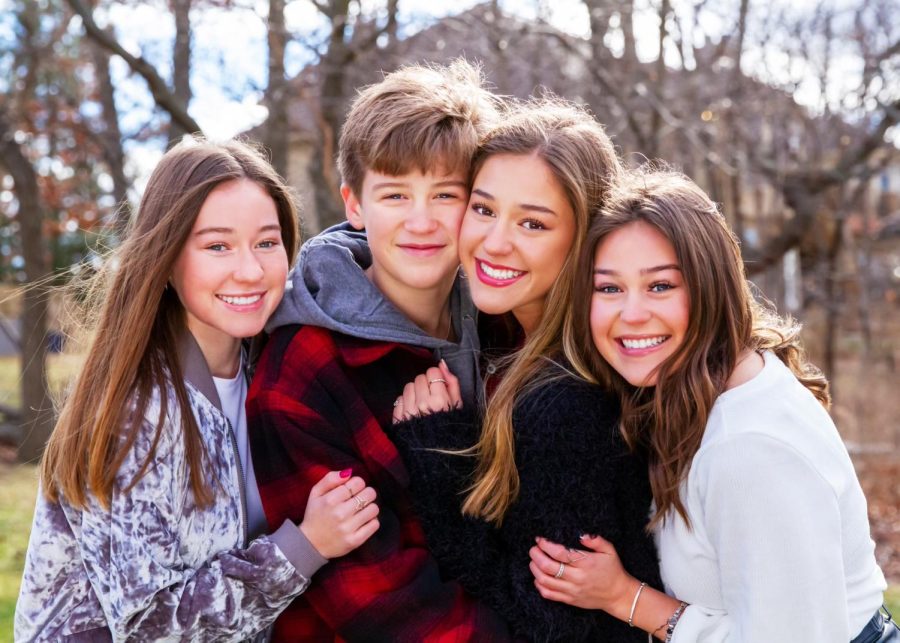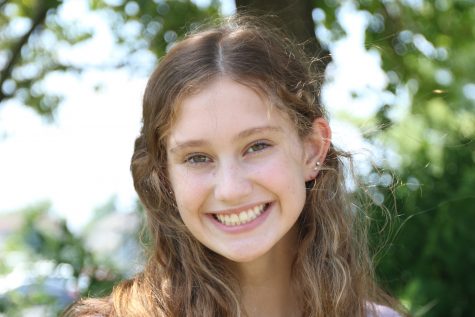The fact and fiction of birth order stereotypes
Students and teachers compare their own family’s sibling personalities to stereotypes based on birth order
By Submitted by Mackinley Fields
Junior Tierney Fields, far left, poses with her siblings. Fields has two older sisters and one younger brother.
January 30, 2022
Many have heard the age-old stereotypes about birth order. The oldest is a perfectionist, the middle is forgotten, and the youngest is confident and wild. However popular these stereotypes may be, they are not entirely true. According to psychology teacher Kirsten Crandall who teaches about birth order, the order in which children are born is linked to different personality traits because each child adapts to roles in the family that aren’t already filled, bringing out certain traits in each child.
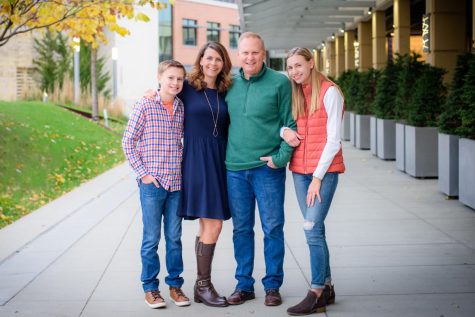
Oldest children are typically more independent, assertive, and responsible. Being born first, they try to impress their parents, and as a result, are more conscientious and caretaker-worthy.
Junior Lena Mackie, the oldest of three siblings, believes that caring for their younger sisters made them a caretaker.
“I basically half raised my sisters… because [my mom] is the nurse manager for an entire hospital.” Mackie said, “I feel kind of motherly, and feel the need to protect and take care of people.”
Additionally, oldest siblings tend to take responsibility for things in order to stand up for others. This explains why parents will often place blame on the oldest child since they’re expected to be most responsible.
“I’ll always take the fall for stuff with my friends because I’m used to always getting in trouble, no matter what happens,” Mackie said. Even if my sister does something, I’ll get in trouble for it.”
According to sophomore Chaley Spaulding, she plays a pioneering role in her family dynamic as the oldest child.
“My parents are harder on me being the oldest,” Spaulding said. “I’m their first kid and I’m all of their first experiences.”
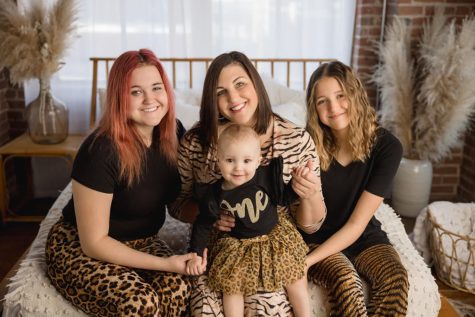
FACS teacher Ellen Gray teaches about birth order in her class and has three boys of her own. Gray believes her oldest son demonstrates some of the stereotypical traits that are shared among firstborn children
“He definitely is mature for his age,” Gray said. “He likes to hang out sometimes with older people and talk to them.”
As for middle children, their traits are fairly mellow. Middle children are more likely to be peacemakers, advocates and make for excellent teammates and friends. The
y tend to be less family-oriented because they have less of a sense of belonging and have strong social circles instead.
Gray’s middle child shows traits that line up with some of the stereotypical attributes tied to middle kids.
“My middle child definitely has what I consider ‘middle child syndrome’ where he feels like no one loves him and we don’t pay attention to him,” Gray said. “He feels like he really connects more with his friends more than his family.”
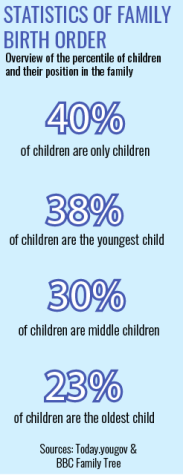 For junior Tierney Fields, who is the third of four children, it’s difficult to receive recognition for achievements when her older sisters have already achieved the same things first.
For junior Tierney Fields, who is the third of four children, it’s difficult to receive recognition for achievements when her older sisters have already achieved the same things first.
“You don’t really have the advantages of doing things first and getting attention from it,” Fields said, “[However,] you also don’t get babied like a younger child.”
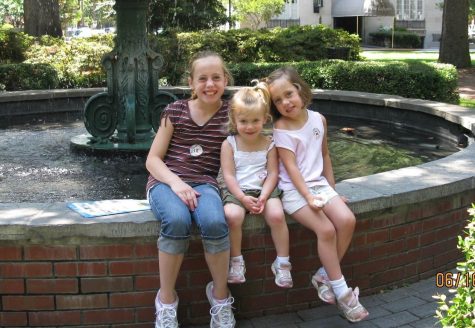
The youngest children in the family are often known for being less concerned about doing things right or achieving certain things and more concerned about having fun with their friends. Oftentimes, these children are more extroverted than others and enjoy having less responsibility within their families.
Spaulding believes her younger brother displays characteristics commonly associated with youngest children.
“I think the youngest gets in trouble less, in my family at least,” Spaulding said. “If it’s between my younger brother and me, it’ll be me that gets in trouble because he’s the youngest.”
Following the aforementioned stereotypes, the youngest children are often left with fewer obligations.
“I think Benton, my younger brother, is more reckless because he doesn’t have as many responsibilities,” Spaulding said.
In opposition to the aforementioned attributes of youngest children, sophomore Molly Bilhimer, the youngest of three girls, believes that being the youngest child in her family is quite different from being the stereotypical, favorite child

“Everybody thinks that [the youngest] are very spoiled. I’m pretty sure I’m the least favorite sibling,” Bilhimer said. “[My sisters] really only care about themselves. A lot of the things that they don’t benefit other people.”
Stereotypical traits based on birth order can all manifest themselves in family constructs in many different ways. Birth order can shape a person’s personality and behaviors in many different ways.



